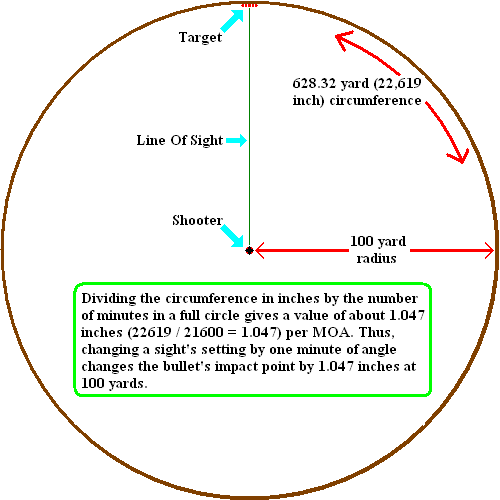Knowing how much the sight adjustment is changed
by each increment of your sights is important if you want
to use Ballistic Explorer to its fullest. For guns with iron
sights, you can make a few simple measurements and calculate
how much each step on the ramp changes the sight adjustment.
To get an accurate value, make careful measurements and record
them in inches. First you need to measure how far the rear
sight can move up and down. To do this, put the rear sight
on the lowest step of its ramp, and measure the distance from
the top of the barrel to the top of the sight's blade. Now
put the rear sight on the highest step of its ramp, and again
measure the distance from the top of the barrel to the top
of the sight's blade. Subtract the first distance from the
second to get the vertical movement of the rear sight. Divide
the vertical movement by the number of steps in the ramp.
This gives you the vertical movement per step.
The same procedure is used for sights with a
screw adjustment. Turn the screw in until the rear sight is
in its lowest position, and measure its height above the barrel.
Next, turn the screw out 10 clicks (or increments) and measure
the sight's height again. Now subtract the first distance
from the second to get the vertical movement of the rear sight.
Divide the vertical movement by 10 to get the vertical movement
per click.
To get the sight base, measure the distance
from the rear sight's blade to the highest point of the front
sight. Finally, divide the number 3,438 by the sight base
distance (in inches), and then multiply that number by the
vertical movement per step. The result is how many MOA each
step of the ramp changes the sight adjustment.
For example, on a particular gun, the rear sight's
distance above the barrel in the lowest step of the ramp is
25/64 of an inch, while its distance above the barrel in the
highest step is 33/64 of an inch. Subtracting 25/64 from 33/64
results in a value of 8/64. Any fraction can be converted
into a decimal number by dividing its numerator (top number)
by its denominator (bottom number); thus, the rear sight's
vertical movement is 0.125 inch (8 divided by 64).
The ramp on this particular gun has 10 steps,
so the vertical movement per step is 0.0125 inch (0.125 divided
by 10). Next, the distance from the rear sight's blade to
the highest point of the front sight is 19.2 inches. The number
3,438 divided by 19.2 is 179.1. The number 179.1 multiplied
by 0.0125 (vertical movement per step) is 2.24. Thus, each
step of the ramp changes the sight adjustment by 2.24 MOA.

